
E. Nobel was a tobacco company based in Copenhagen, Denmark.

E. Nobel was a tobacco company based in Copenhagen, Denmark.

The company was founded when Christian Kastrup opened a tobacco factory at Vestergade 11 (formerly No. 44) in 1806. The company was in 1854 acquired by E. F. Nobel (1810-1892). He had back in 1835 established a tobacco company in Nykøbing Falster but that company was now left in the hands of and later acquired by B. C. Nobel (1825–1890) and H. Baagøe (died 1900). [1]

E. F. Nobel's new venture in Copenhagen grew rapidly and he soon expanded it with a large, new cigar factory at Smallegade in Frederiksberg (now Porcelænshaven) and a chewing tobacco factory at Prinsessegade 60 (formerly 50) in Christianshavn. The Frederiksberg site was later ceded to the Royal Porcelain Factory in exchange for the porcelain factory's site at Prinsessegade 62 (formerly 52). [2]
E. F. Nobel made T. S. Braun a partner in the company in 1855 and Nobel's son Chr. P. Nobel (1841–1899) became a partner in 1879. T. S. Braun's son, P. Braun, became a partner in 1887. Bruun Sr. died shortly thereafter and the firm was the following year split in two when Nobel's son kept the cigar and smoking tobacco activities while Braun's two sons continued the chewing tobacco activities under the name Brødr. Braun. [1]
E. F. Nobel's death in 1892 left Chr. P. Nobel as the sole owner of the company. After his death in 1899 it was continued by his widow, Nanna Nobel, and son, E. F. Nobel (1875-1941).
The Nykøbing Falster company was continued by B. C. Nobel and H. Baagøe until B. C. Nobel's death in 1890. His share of the company was passed to his son, Emil Nobel (1861–1906). H. Baagøe died in 1900 and the company was then continued by Emil Nobel alone until his death in 1906. The company was then passed to his widow, Emma Nobel, but H. Nobel (born 1880), a son of Chr. P. Nobel and Nanna Nobel), became a partner. The company was in 1908 taken over by E. Nobel in Copenhagen and H. Nobel then joined his mother and elder brother as a partner. [1]
E. Nobel merged with Chr. Augustinus Fabrikker and Horwitz & Kattentid under the name De Danske Cigar- & Tobaksfabrikker in 1919. E. F. Nobel and H. Nobel were both board members of the new company.
In 1938, E. F. Nobel and H. Nobel bought E. Nobels Fabrikker out of the merger. E. F. Nobel passed away in 1941 and his share of the company was then taken over by his son B. Nobel. One of H. Nobel's sons, H. J. Nobel, became a partner in 1945. [1]


The company name is still seen on the facade of its former building at Vestergade 11 in Copenhagen. Its former factory at Prinsessegade 60–62 is now used by Christianshavn Gymnasium.
The cigar factory in Nykøbing Falster was taken over by Scandinavian Tobacco Group in 1991. It closed in 2016. The youngest part of the building is from 1939. [3]
Irma was a high-end chain of supermarkets in Copenhagen and other parts of eastern Denmark. Its first store was established in 1886 by Karen Marie Schepler. On 31 January 2023 Irma's owners, Coop Danmark, announced that all Irma supermarkets would be rebranded or closed within the course of the year.
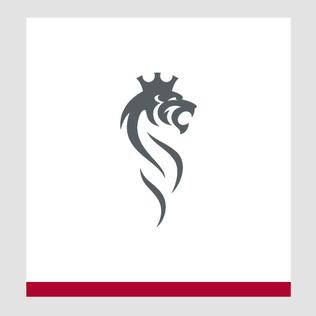
Scandinavian Tobacco Group is a manufacturer of cigars and traditional pipe tobacco. The city company is headquartered in Copenhagen, Denmark, and is a publicly listed Company on Nasdaq Copenhagen.
Philip de Lange was a leading Dutch-Danish architect who designed many different types of building in various styles including Dutch Baroque and Rococo.

Otto Valdemar Koch was a Danish architect and local politician. He designed a number of churches in Copenhagen.
Einar Ambt was a Danish architect.
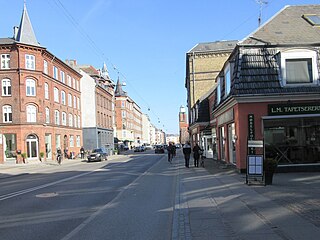
Smallegade is a busy shopping street in the central part of Frederiksberg in Copenhagen, Denmark. It runs from the Town Hall Square in the east to Fasanvej in the west, along the north side of Frederiksberg Town Hall and Frederiksberg Park, linking Gammel Kongevej with Peter Bangs Vej. On the other side of the Town Hall is Bredegade, now smaller than Smallegade, which after a while joins Smallegade at Møstings Hus, an 18th-century country house-turned-exhibitions space, which overlooks a small pond.

C.W. Obel is a former Danish tobacco manufacturing company which now serves as an investment company fully owned by the foundation Det Obelske Familiefond. Its activities comprise real estate and private equity investments as well as partial ownership of Scandinavian Tobacco Company, Tivoli A/S and Fritz Hansen through Skandinavisk Holding A/S.
Arnold Busck, named after founder Arnold Busck, is a family-owned Danish company with activities in book distribution and publishing. The Arnold Busck chain of bookstores is one of the largest Danish book retailers with 30 stores.

Axel Preisler(12 May 1871 – 25 September 1930) was a Danish architect.

Bodenhoffs Plads is an area located in the north-eastern part of Christianshavn, Copenhagen, Denmark. The site is separated from Grønlandske Handels Plads to the west by Christianshavns Kanal and by Trangraven from Holmen to the north. It is connected to both areas by the three-way footbridge Trangravsbroen.

Philip Smidth was a prolific Danish architect in the late 19th and early 20th centuries. His works included, commercial properties, high-end apartment buildings, hotels and hospitals. He worked in the Historicist style. Two of his works, Liselund Ny Slot on the island of Møn and Gefion and Gylfe in Copenhagen, have been listed by the Danish Heritage Agency.

Edward Tesdorpf, was a German-Danish landowner, agricultural pioneer and sugar manufacturer. He became the owner of ten estates; many were located in the Lolland-Falster area where he resided at Orupgaard near Nykøbing Falster, where he founded a sugar factory in 1884. Several of the estates are still owned by his descendants, including Gjedsergaard and Pandebjerg on Falster.

Chr. Augustinus Fabrikker is a former Danish tobacco company which now serves as the investment company of the Augustinus Foundation.

Jean Christian Ferslew was a Danish newspaper publisher and paper manufacturer. He inherited a small printing business in the 1850s which under his management as C. Ferslew & Co. developed into the largest Danish newspaper publishing company of the late 19th and early 20th century. He also established a paper mill in Frederiksberg.

Kingosgade is a street straddling the border between Vesterbro and Frederiksberg in Copenhagen, Denmark. It runs from Vesterbrogade in the south to Frederiksberg Allé in the north, linking Enghavevej with Alhambravej.
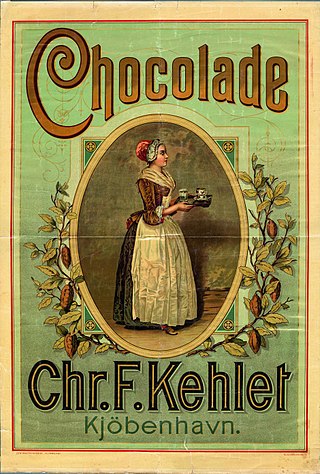
Christian F. Kehlet was a Danish chocolate company based in Copenhagen, Denmark. The company was from 1873 based at Jagtvej 83-85 in Nørrebro. It was merged with Brødrene Cloëtta in 1929 and the factory on Jagtvej closed the following year.

I. H. Rubens Fabrikker was a textile company based in Copenhagen, Denmark. Its factory complex on Rolighedsvej in Frederiksberg was in the late 19th century the largest factory of its kind in Denmark as well as the largest employer of women. The factory was demolished in the 1940s and has now been replaced by Hostrups Have, a Functionalist housing estate arranged around a central greenspace.
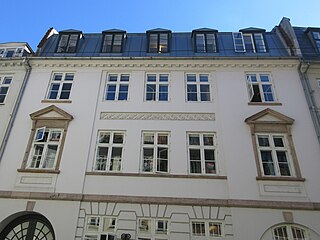
Vestergade 5 is a Neoclassical property in the Old Town of Copenhagen, Denmark. The building was constructed for the owner of the tobacco manufacturer Chr. Augustinus Fabrikker in 1797 and the company was until 1870 based in the complex. It was listed in the Danish registry of protected buildings and places in 1918.

The Philip de Lange House, built in association with a nitrary in the 1750s, is the Rococo-style former home of Dutch-Danish architect and master builder Philip de Lange at Prinsessegade 54 in the Christianshavn neighborhood of Copenhagen, Denmark. It was from 1877 to 1864 part of the Royal Porcelain Manufactory's Christianshavn factory and is now hidden from the street by a school building from 1865. The house was listed on the Danish registry of protected buildings and places in 1932. It is now part of Christianshavn School and houses the school's after school programmes.
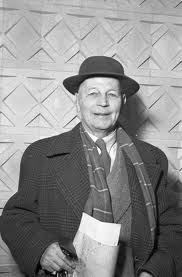
Bent Helweg-Møller was a Danish architect. His works include the listed Villa Vendle in Tisvilde (1911) and Svane Apotek (1934) in Copenhagen as well as the Berlingske Building in Copenhagen and an extension of Odense City Hall in Odense. He has also renovated a number of historic properties, including the Niels Brock House and Heering House on Christianshavn and Klostergården on Amagertorv in Copenhagen.